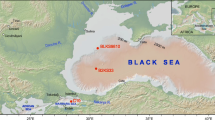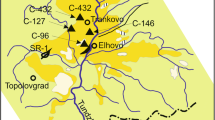Abstract.
A continuous pollen record covering the last 28 kyr was obtained from core C106 collected in the Bay of Salerno in the southern Tyrrhenian Basin, seven radiocarbon dates and the recognition of two tephra layers (Y3 and Pompeii Pumice) providing good chronological constraints. The clear climatic signal given by the pollen spectra integrated by isotopic data, combined with comparisons with other Mediterranean sites, allowed the Last Glacial, Late Glacial and Holocene periods to be distinguished in the core. In particular, the Last Glacial period is characterised by large quantities of herbaceous and steppe elements such as Artemisia. The beginning of the Late Glacial has been correlated with the first increase of deciduous Quercus and the reduction of steppe and herbaceous elements. The Younger Dryas event is recorded only by oxygen isotopes while the vegetation does not seem to change, as in other Mediterranean sites. The Holocene corresponds to rich deciduous and evergreen forests. The first features which could be interpreted as signs of human presence are represented by a few grains of Juglans, Castanea and cereal-type while intensive olive cultivation and deforestation seem to fall within the Middle Ages.
Similar content being viewed by others
Author information
Authors and Affiliations
Additional information
Received October 10, 2001 / Accepted June 20, 2002
Correspondence to: Elda Russo Ermolli
Rights and permissions
About this article
Cite this article
Ermolli, E., di Pasquale, G. Vegetation dynamics of south-western Italy in the last 28 kyr inferred from pollen analysis of a Tyrrhenian Sea core. Veget Hist Archaeobot 11, 211–220 (2002). https://doi.org/10.1007/s003340200024
Issue Date:
DOI: https://doi.org/10.1007/s003340200024




